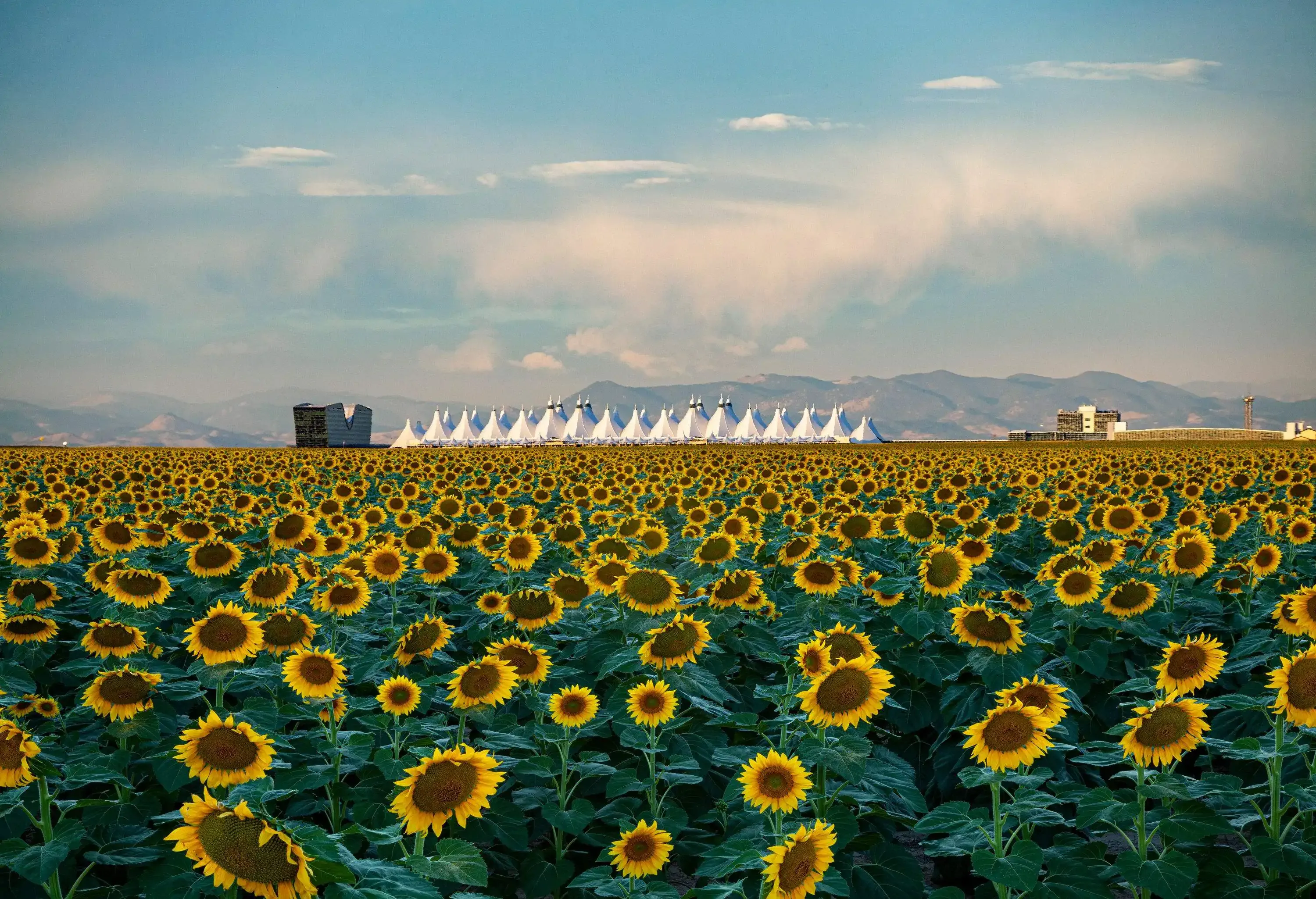“One is nearer God’s heart in a garden than anywhere else on earth.” – Dorothy Frances Gurney
At its most basic, a garden is a piece of land shaped into a place where fruits, vegetables and flowers bloom, but these flora-filled oases can be so much more.
A place for contemplation, relaxation or a haven to unwind and enjoy the world around, a simple collection of plants, water features and ornaments, or an extravagantly designed masterpiece that strays so far from tradition you’ll wonder if it’s a garden at all.
The Cheapflights crew has searched high and low to uncover 10 of the most unusual gardens found on Earth, from a mathematical masterpiece to a beautiful garbage collection.
Las Pozas, Xilitla, Mexico
A “Surrealist Xanadu” in the heart of the Mexican jungle, Las Pozas (the Pools) combines man-made structures with exotic flowers, native plants, waterfalls and pools to create a strangely harmonious and peaceful garden.
The gardens are the creation of eccentric English poet and artist Edward James, who bought the 80-acre former coffee plantation in the mid-1940s in an attempt to create his own Garden of Eden.
Between 1949 and 1984, James built a total of 36 surreal concrete sculptures and structures on the site with names such as the House with a Roof like a Whale and the Staircase to Heaven.
As of 2007, the gardens are maintained by the Fondo Xilitla foundation.
The Garden of Cosmic Speculation, Dumfries, Scotland
Science and mathematics plus sculptures and landscaping equal one fascinating garden of cosmic proportions.
The Garden of Cosmic Speculation is a 30-acre garden created by landscape architect and architectural theorist Charles Jencks at his home, Portrack House in Southwest Scotland.
Inspired by science and mathematics, the garden’s sculptures and landscaping are suitably based on everything from black holes to fractals. There is also a distinct oriental influence thanks to Jencks’ late wife Maggie Keswick, an expert on Asian garden design.
While the garden is private, it does open up to the public one day a year as part of Scotland’s Gardens Scheme and raises money for Maggie’s Centres, a cancer care charity.
Rock Garden of Chandigarh, India
The saying goes that one man’s junk is another man’s treasure, but in the case of the Rock Garden, a city’s junk was transformed into everyone’s treasure.
Public servant Nek Chand began creating his masterpiece in 1957 from cast-off industrial and home waste he collected from demolition sites across Chandigarh.
However, his chosen site was actually conservation land with a building restriction. He managed to keep his construction secret for 18 years and, when the authorities finally uncovered the garden, it had grown into 12 acres of courtyards filled with hundreds of sculptures.
Thanks to public support, the garden was saved from demolition, and Chand was awarded a salary and a workforce of 50 so he could complete his vision.
Today, Nek Chand’s Rock Garden is spread over a massive 40 acres.
A French Kiss in Akaroa, Christchurch, New Zealand
Held every year late in the New Zealand summer, the Ellerslie International Flower Show attracts a global audience of garden designers and garden lovers who come to see the best of garden design, gardening trends and new products.
Founded in Auckland in 1994, the show moved to its current (and fitting) home in Hagley Park, Christchurch, New Zealand’s Garden City, in 2008.
In 2013, landscape designer Ben Hoyle picked up his sixth Gold Medal for his sunken oasis called “A French Kiss in Akaroa” that featured a lounge pit filled with pillows where visitors could take in a unique view from below the waterline. The inspiration for the garden came from the history of the French settlement in the South Island town of Akaroa.
Kate Hillier, exhibition manager at the Ellerslie International Flower Show said the garden, along with several others, had been donated to New Brighton – a coastal suburb in Christchurch that was badly damaged in the 2011 Christchurch earthquake.
“We look forward to seeing the garden live on, brightening the days of people living in such a seriously damaged area,” Hillier said.
Forestiere Underground Gardens, Fresno, California, United States
Forestiere Underground Gardens are the creation of Sicilian immigrant Baldasare Forestiere, who built the garden over 40 years from 1906 until his death in 1946.
Inspired by a childhood fascination with the catacombs in Rome, Forestiere built the Underground Garden as an escape from the scorching Fresno summer.
Today a listed California Historical Landmark, the three-level underground structure is a network of rooms and passageways and features a summer and winter bedroom, kitchen, fish pond, a parlor complete with fireplace, and several subterranean gardens.
Many of the garden’s plants are more than 100 years old and, thanks to the underground construction, are protected from frost over the winter months.
The garden is home to a variety of fruit-bearing trees and vines from citrus to berries that were planted at different times, so the trees bloom one after the other giving a lengthened growing season.
Arctic-Alpine Botanical Garden, Tromsø, Norway
The Arctic-Alpine Botanical Garden (Arktisk alpin Botanisk hage) is the most northern botanical garden in the world and home to an impressive display of Arctic and alpine plants from across the globe.
Opened in 1994, the garden is run by the Tromsø University Museum and aside from the Arctic collection it features plants from the Himalayas, South America and even Africa.
The city of Tromsø lies 220 miles inside the Arctic Circle (corresponding to the north coast of Alaska) and experiences the famed “Midnight Sun” from mid-May until late-July. However, from late-November until mid-January the sun never rises. But, thanks to the Gulf Stream, winters in Tromsø are relatively mild with an average temperature of 24°F.
The garden is open from May to October and entry is free of charge.
Bookworm Garden, Sheboygan, Wisconsin, United States
Pull up a pew, make yourself comfy and settle down for story time in Sheboygan’s Bookworm Garden.
The creation of local gardener Sandy Livermore, the garden takes inspiration from more than 60 of the world’s most loved children’s books including “Hansel and Gretel,” “Winnie the Pooh,” “Goodnight Moon,” “Where the Wild Things Are” and, of course, the “Secret Garden.”
The garden is divided into six themed areas, called Gateways. Books for each area are laminated and stored at the entrance of each Gateway.
The garden is open from May 1 to October 31 and entrance is free.
Tarot Garden (Giardino dei Tarocchi), Tuscany, Italy
The imaginative sculptures by French artist Niki de Saint Phalle sparkle against the picturesque Tuscan landscape in the Tarot Garden (Giardino dei Tarocchi) of Capalbio, Italy.
Inspired by Gaudí´s Parc Güell in Barcelona, Spain, de Saint Phalle wanted to create a “small Eden where man and nature meet.”
Each of the garden’s giant statues was designed and painstakingly handmade by de Saint Phalle including the Empress, the Tree of Life, the Devil, the Magician and the Sun.
The Tarot Garden is open 2:30 p.m. to 7:30 p.m. from April to October.
Jardin Majorelle, Marrakech, Morocco
The Majorelle Garden is a 12-acre botanical and landscape garden designed by the French artist Jacques Majorelle in the 1920s and 1930s.
Open to the public since 1947, the garden was owned by legendary fashion designer Yves Saint-Laurent from 1980 until his death in 2008 (his ashes are scattered in the garden).
The garden contains cacti, exotic plants and trees set off by vibrant colors, pools, streams and fountains.
Majorelle even created a special shade of bold cobalt blue, now called Majorelle Blue, that is found on many of the buildings throughout the garden.
The garden also houses the Islamic Art Museum of Marrakech, which includes North African textiles from Saint-Laurent’s personal collection and ceramics, jewelery and paintings by Majorelle.
Poison Gardens, Northumberland, England
A garden so deadly you can only enter with a fully qualified guide.
The Poison Garden at Alnwick Garden is the personal project of the Duchess of Northumberland.
More than 100 plants of varying degrees of deadliness are grown in the Poison Garden and many of the plants had to be given a special license from the Home Office to be included in the display.
Some of the garden’s deadly inhabitants include mandrake (a strong narcotic), deadly nightshade (just three of the sweet berries are enough to kill), opium and foxglove (a 16th-century laxative, the entire plant is poisonous).
Daily tours run every 20 minutes with the last tour leaving at 5:15 p.m.
(Main image by Ellerslie International Flower Show)



